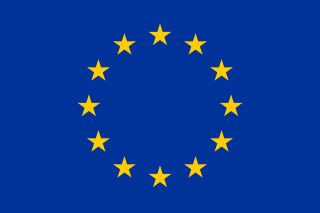We’re working with partners to investigate how design automation can be put into practice for the co-design of chips and packages using millimeter waves in order to develop innovative circuits, architectures, and antennas.
Massive and rapidly increasing demand for wireless data bandwidth – particularly as a result of the Covid-19 pandemic – is pushing existing networks to the limits of their performance. To meet this demand, the mobile communications industry is looking for solutions and technologies that operate in high-frequency “millimeter-wave” (mmWave) bands above 24 GHz, as these permit a severalfold increase in bandwidth and data rates. mmWave technologies are a prerequisite for future applications in the Internet of Things (IoT), for Industry 4.0, for automotive safety during autonomous driving, for example, and for telecommunications (5G/6G). German and European industry leads the world in relation to these mmWave technologies thanks to its considerable expertise in the areas of analog, HF, and mixed-signal semiconductor design as well as in transmission and systems design. Through their research work, the project partners are seeking to consolidate and expand upon this leading role.
Challenge
The greatest challenge for the project partners is that innovative mmWave applications and their integration into complex systems impose stricter requirements than existing technologies when it comes to bandwidth, performance, and power. Current architectures, methods, and tools are not suitable for achieving the desired level of quality in the upper GHz band. The industry therefore needs to introduce new processes and materials in order to overcome these challenges. Further improvements to system performance and overall manufacturing yield will rely on co-design, co-integration, and scaling – and this, in turn, requires component manufacturers, system integrators, and testing companies to work together closely in order to overcome complex challenges relating to capacity, costs, performance, yield, and reliability. There is also a need for research into new, reusable circuit architectures and design methodology, because the high-frequency range is not covered either by existing standard tools for electronic design automation (EDA) or by intellectual property (IP) providers.
Approach
The project partners from Canada, Germany, the Netherlands, and Sweden will pool their skills in the areas of design, layout, packaging, and test methodology in order to deliver innovative mmWave circuits, architectures, systems, and antennas.
Researchers at Fraunhofer IIS/EAS are currently investigating how design automation can be put into practice for the co-design of chips and packages using millimeter waves. New simulation and design tools, as well as new measurement techniques, are giving rise to demonstrators that can handle the requirements of mmWave designs. In this context, Fraunhofer IIS/EAS will contribute its long-standing expertise in packaging, component design, and the development of design tools.
The results obtained by the InnoStar partners are intended to consolidate their pioneering role. In the future, there will therefore be closer collaboration with a view to driving design efficiency and cost reductions in the industry, as well as improving the competitiveness of national and European partners.
Our Know-how for your Project
Would you like to become one of our project partners? Fraunhofer IIS/EAS has decades of experience in carrying out contract research for industrial companies. Submit your request and we’ll get in touch with you to discuss the scope for collaboration.
 Fraunhofer Institute for Integrated Circuits IIS, Division Engineering of Adaptive Systems
Fraunhofer Institute for Integrated Circuits IIS, Division Engineering of Adaptive Systems
